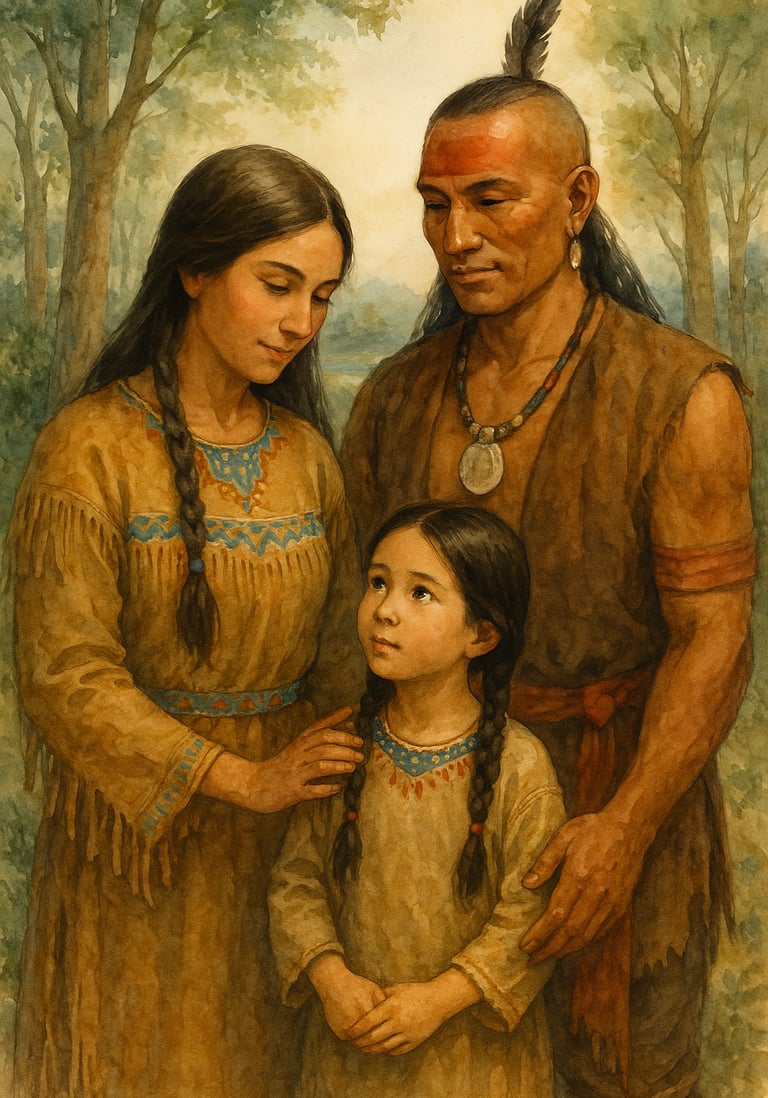St. Kateri Tekakwitha
Lily of the Mohawks
Halo & Light Studios
7/14/20252 min read


Click Link for a reel of Daily Dose of Saints and Faithful Art:
https://youtube.com/shorts/LehQlYG-BF0?feature=share
In the mid-1600s, while empires clashed across continents and missionaries sailed into the New World, a quiet yet powerful light was rising in the wilderness of present-day upstate New York. St. Kateri Tekakwitha, born in 1656 in the Mohawk village of Ossernenon, emerged as a radiant witness of grace amid suffering and cultural upheaval.
Kateri was born during a volatile era of global expansion. The Thirty Years’ War had just ended in Europe, leaving a religiously divided continent. Across the Atlantic, French and English colonizers were racing to stake claims in North America, forging uneasy alliances and brutal conflicts with Indigenous peoples. Jesuit missionaries, inspired by the Counter-Reformation, had begun their missions among the Huron and Iroquois, often at great personal risk.
Kateri’s mother, Tagaskouita, was a Christian Algonquin woman who had been captured and assimilated into Mohawk life. Her father, Kenneronkwa, was a Mohawk chief. When smallpox ravaged her village, Kateri was just four years old. The disease took her parents and baby brother, leaving her orphaned, disfigured, and partially blind. But in her suffering, she clung to the memory of her mother’s whispered prayers and quiet faith.
At age 19, she encountered the French Jesuits, notably Father Jacques de Lamberville, and was baptized on Easter Sunday, 1676, taking the name Catherine, after St. Catherine of Siena. Her decision drew scorn and rejection. She refused marriage and embraced a life of virginity and Christian devotion—something unheard of in her culture.
Amid escalating tensions between Christian converts and traditionalists, Kateri fled nearly 200 miles north to Kahnawake, a Jesuit mission near Montreal. There she lived a hidden life of penance, prayer, and works of mercy—especially toward the elderly and sick.
She died in 1680 at the age of 24. Those present testified that at the moment of her death, her pockmarked face became smooth and radiant. Though she lived far from the power centers of Europe, her sanctity echoed through the Church.
Canonized by Pope Benedict XVI in 2012, St. Kateri Tekakwitha became the first Native American saint. She is now honored as the patroness of Indigenous peoples, ecology, and purity—a bridge between her people’s heritage and the eternal truths of the Gospel.
